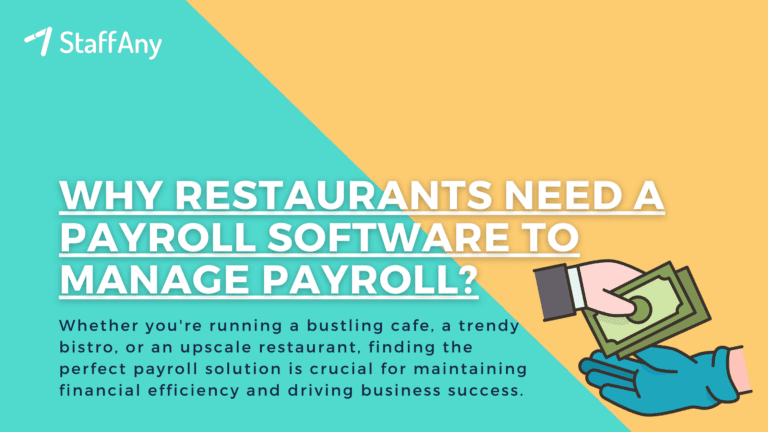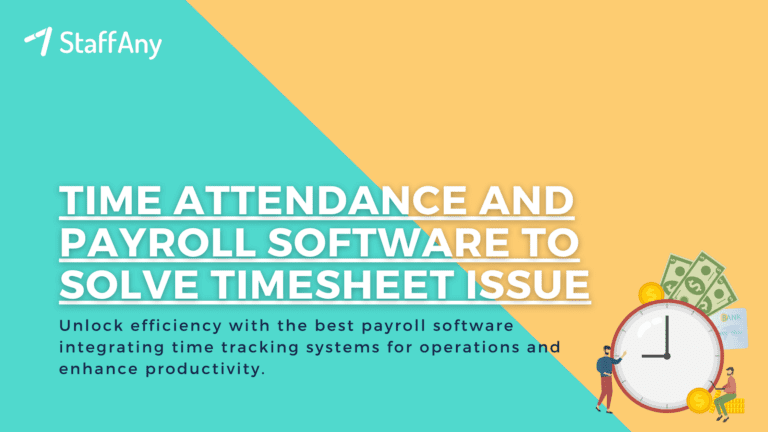In the fast-paced world of the F&B industry, shift work schedules are crucial to keeping operations running smoothly. However, managing shift work schedules can be a daunting task for managers and business owners.
This comprehensive guide will provide insights into what shift work schedules are, the different types of schedules, why they are essential in the F&B industry, and tips for creating effective schedules.
What is a Shift Work Schedule?

Shift work schedules are a type of work schedule that is used in industries that require round-the-clock operations, such as healthcare, retail, and the F&B industry. Unlike traditional 9-to-5 work schedules, shift work schedules often include non-traditional hours, such as early mornings, evenings, weekends, and even holidays.
Shift work schedules are essential in industries that require 24/7 coverage. These schedules can be customised to ensure that the right staff with the right skills are available at the right time. For example, a restaurant may need more servers during peak hours and more chefs during preparation times.
Shift work schedules can also be used to reduce labour costs by allocating staff according to business needs. However, creating effective shift work schedules requires effective and efficient management of human resources.
Read more: Understanding How to Make a Shift Roster
Various Types of Shift Work Schedules

Creating an effective shift work schedule is crucial to running a successful business, especially in the F&B industry. There are several different types of shift work schedules to choose from, and each has its own unique advantages and disadvantages. Here are some of the most common shift work schedules
1. Fixed Shifts
Fixed shifts assign employees to a specific shift for a set period, such as a week, month, or year. The schedule remains the same regardless of business needs or employee preferences.
This type of shift work schedule is often used in industries that require constant coverage, such as healthcare or emergency services. In the F&B industry, fixed shifts may be used for staff who work in back-of-house roles, such as chefs or dishwashers.
Fixed schedule shifts can be categorized into three types of shift:
– Day Shift (1st Shift)
The day shift typically runs from early morning to late afternoon or early evening, usually between the hours of 7:00 AM and 3:00 PM or 8:00 AM and 4:00 PM.
– Evening Shift (2nd Shift)
The evening shift usually begins in the late afternoon and continues until around midnight. The hours for this shift might be around 3:00 PM to 11:00 PM or 4:00 PM to 12:00 AM.
– Night Shift (3rd Shift or Graveyard Shift)
The night shift typically starts in the late evening or midnight and runs until the early morning hours. Common hours for the night shift are 11:00 PM to 7:00 AM or 12:00 AM to 8:00 AM.
2. Rotating Shifts
Rotating shift schedule assign employees to different shifts on a rotating basis, such as weekly or monthly. This allows for more even distribution of work and helps prevent burnout. In the F&B industry, rotating shifts may be used for front-of-house staff, such as servers or bartenders.
Rotating shift patterns may be divided by:
– Swing Shift
Employees rotate between day, evening, and night shifts, often changing every week or month.
– Duplex Shift
Employees work two shifts, usually a day shift and a night shift, with rest days in between.
3. Split Shift
Split shifts are when an employee works two or more shifts in a single day with a break in between. This type of shift work schedule is often used in industries that require extended hours, such as transportation or hospitality.
In the F&B industry, split shifts may be used for staff who work in both front-of-house and back-of-house roles, such as hosts or kitchen assistants.
4. On-Call Shifts
On-call shifts are when shift workers are scheduled to be available to work but is not guaranteed to be called in. This type of shift work schedule is often used in industries that have fluctuating demand, such as retail or hospitality.
In the F&B industry, on-call shifts may be used for staff who work in specialised roles, such as catering or events.
5. Flextime Shifts
Flextime shifts allow employees to set their own schedules within a predetermined time frame. This type of shift work schedule is often used in industries that prioritise work-life balance, such as technology or finance.
In the F&B industry, flextime shifts may be used for staff who work in roles with flexible hours, such as marketing or administrative positions.
Read more: Graveyard Shift: Meaning, Advantages, and Disadvantages
6. Weekend Shifts
Some industries require employees to work on weekends, often with a schedule that aligns with typical business hours or other shift patterns.
7. Overtime Shifts
Overtime shifts occur when employees work beyond their regular hours, often to cover peak demand periods or unexpected events. Overtime can occur during any shift.
8. Seasonal or Temporary Shifts
Certain industries, such as retail during the holiday season or agriculture during harvest periods, may have shifts that are only active during specific times of the year. On the other hand, employees work during specific seasons or periods of high demand, allowing businesses to scale their workforce as needed.
Read more: Shift Working Hours in Malaysia: Guidelines and Useful Tips
Why Do You Need Different Shift Schedules in the F&B Industry?
The F&B industry is a highly competitive and dynamic sector that requires businesses to be adaptable to changing customer needs and preferences. One way to achieve this is by using different shift work schedules to optimise staffing levels and ensure the best use of employee time and resources. Here are some reasons why F&B businesses need different shift schedules:
1. Irregular Hours
The F&B industry operates at irregular hours, including early mornings, late nights, weekends, and holidays. Shift work schedules allow for 24/7 coverage, ensuring that the business can provide uninterrupted service to customers.
2. Different Demands at Different Hours
The F&B industry experiences fluctuations in demand throughout the day and week. Shift work schedules allow managers to allocate staff according to business needs, reducing labour costs and increasing efficiency.
3. Requires Staff with Different Skills
The F&B industry requires staff with different skill sets to perform different tasks, such as cooking, serving, and cleaning. Shift work schedules can be customised to ensure that the right staff with the right skills are available at the right time.
Read more: Guideline for Overtime in Malaysia Labour Law
Tips for Creating Work Shift Schedules in the F&B Industry

Creating work shift schedules can be a complex and time-consuming process, but it is critical to the success of F&B businesses. Effective scheduling ensures that businesses have the right number of employees on the floor to meet customers’ demands and optimise labour costs. Here are some tips for creating work shift schedules that are effective and efficient:
1. Use Scheduling Software
Scheduling software like StaffAny can help businesses create work shift schedules quickly and efficiently. It can automate many of the manual processes involved in scheduling, such as tracking employee availability and managing shift swaps.
Additionally, scheduling software can help businesses optimise their schedules based on key metrics such as labour costs, sales volumes, and employee performance.
2. Involve Employees in the Scheduling Process
Involving employees in the scheduling process can increase their job satisfaction and reduce turnover. It can also help businesses create schedules that better match employee preferences and availability. Consider using employee scheduling surveys or meetings to gather feedback and input from employees.
3. Balance Employee Preferences with Business Needs
While it’s important to consider employee preferences when creating work shift schedules, businesses must balance these preferences with their own needs. For example, businesses may need to schedule their most experienced employees during peak hours or prioritise shifts based on sales volumes.
However, businesses can still try to accommodate employee preferences as much as possible while meeting their own objectives.
4. Monitor and Adjust Schedules Regularly
Scheduling is an ongoing process, and businesses must regularly monitor and adjust their schedules to ensure they are meeting their objectives. Monitor key metrics such as labour costs, sales volumes, and employee performance to determine if your schedules are effective.
Adjust your schedules as needed to optimise your staffing levels and ensure that you are meeting your business goals.
5. Be Transparent and Communicate Effectively
Transparency and effective communication are critical to successful scheduling. Ensure that employees understand the scheduling process and know how to request time off or make shift swaps. Use scheduling software to send automated notifications or reminders to employees about their schedules.
Additionally, communicate any changes to schedules as early as possible to avoid confusion or scheduling conflicts.
Read more: Rotational Shift Meaning and Its Benefits for F&B Businesses
Now you know why creating effective work shift schedules is crucial to the success of F&B businesses. If you’re looking for employee shift scheduling software to help streamline your scheduling process and optimise your staffing levels, look no further than StaffAny’s employee shift scheduling software!
Our user-friendly software is designed to simplify scheduling processes and help businesses save time and money. With features such as scheduling with one click, schedule templates, and real-time schedules update, you can ensure that your business is always staffed appropriately, even during peak hours.
Ready to streamline your scheduling processes and improve your business’s efficiency? Contact us here to get started!











